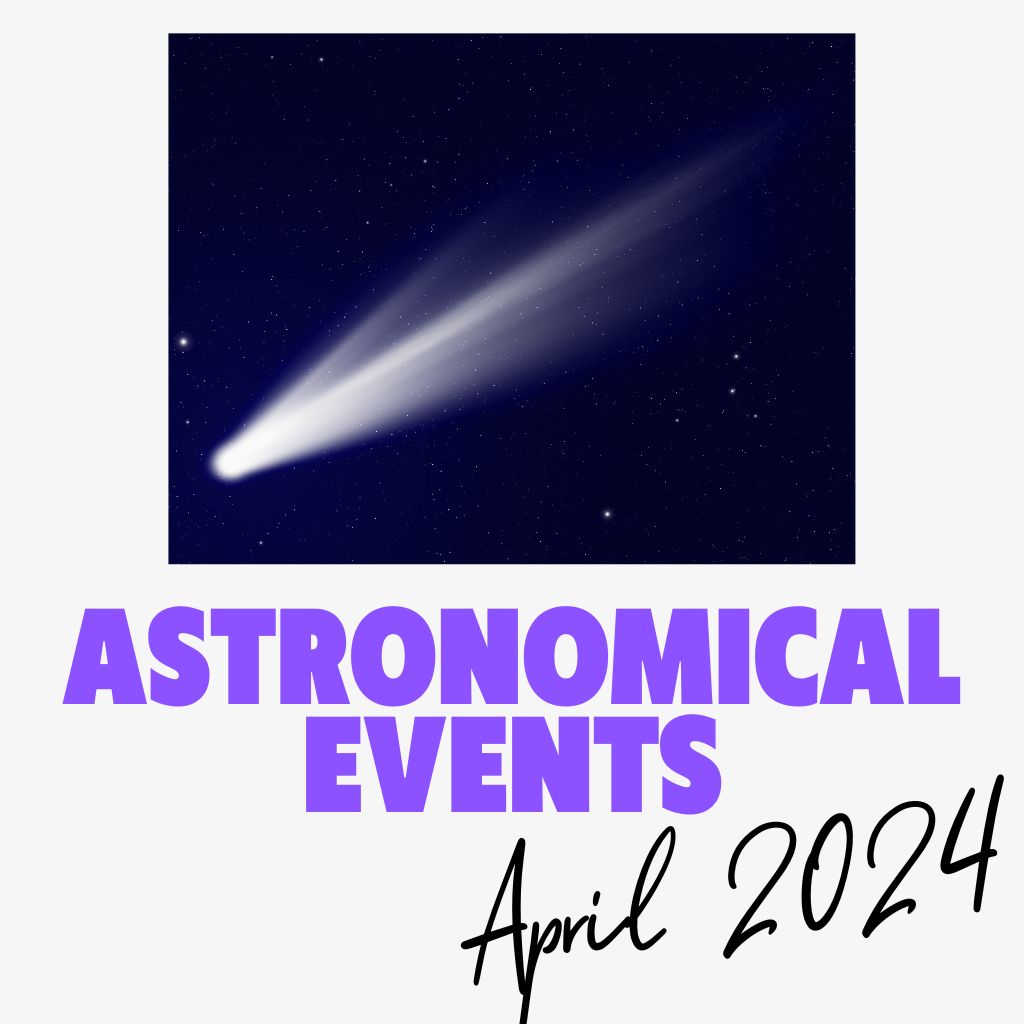This site contains affiliate links to products. I may receive a commission for purchases made through these links.
Following the mesmerizing dance of the Earth, Moon, and Sun during April’s total solar eclipse, the cosmos has scheduled an encore of astronomical phenomena for stargazers worldwide. This month’s celestial calendar is marked by a rare appearance of a ‘devil comet’, the annual Lyrids meteor shower, and the Full Pink Moon, each offering a unique spectacle in the night sky.
April 21: The ‘Devil Comet’ Emerges
Dubbed the ‘devil comet’ due to its peculiar red hue and the mischievous timing of its appearance—coinciding with folklore and superstitions—this celestial wanderer is set to grace the night sky on April 21.
The comet, officially known as C/2024 E3 (for the astronomers at heart), has intrigued scientists and sky enthusiasts alike with its vibrant color and the unpredictability of its orbit. Visible to the naked eye under clear, dark skies, the ‘devil comet’ offers a rare opportunity for observers to witness a comet’s journey through the solar system.
April 21-22: The Lyrids Meteor Shower Lights Up the Sky
The night immediately following the appearance of the ‘devil comet,’ the sky will stage another spectacular show—the Lyrids meteor shower. This annual event, occurring when Earth passes through the debris left by Comet Thatcher, is known for its bright and fast meteors.
Observers can expect to see up to 20 meteors per hour radiating from the constellation Lyra. The Lyrids are particularly special for their occasional surges that can fill the sky with hundreds of meteors. For the best viewing experience, stargazers should find a location away from city lights and look towards the northeastern sky after midnight.
April 23: The Full Pink Moon Illuminates the Night
Capping off a week of celestial events, the Full Pink Moon will rise on the night of April 23. Despite its name, the moon will not actually appear pink; the moniker comes from the pink flowers, specifically wild ground phlox, that bloom in early spring and symbolize the changing seasons. The Full Pink Moon will shine brightly, providing a serene backdrop to the earlier dynamic events and illuminating the night sky for all to enjoy. It serves as a reminder of nature’s cycles and the beauty that can be found in our universe.
April’s lineup of celestial events offers a unique blend of wonder and excitement, inviting both seasoned astronomers and casual observers to look up and appreciate the vastness and beauty of the cosmos.
Don’t miss a celestial event again! ✨ Sign up for Cosmic Journey to get expert astronomy content and more!



